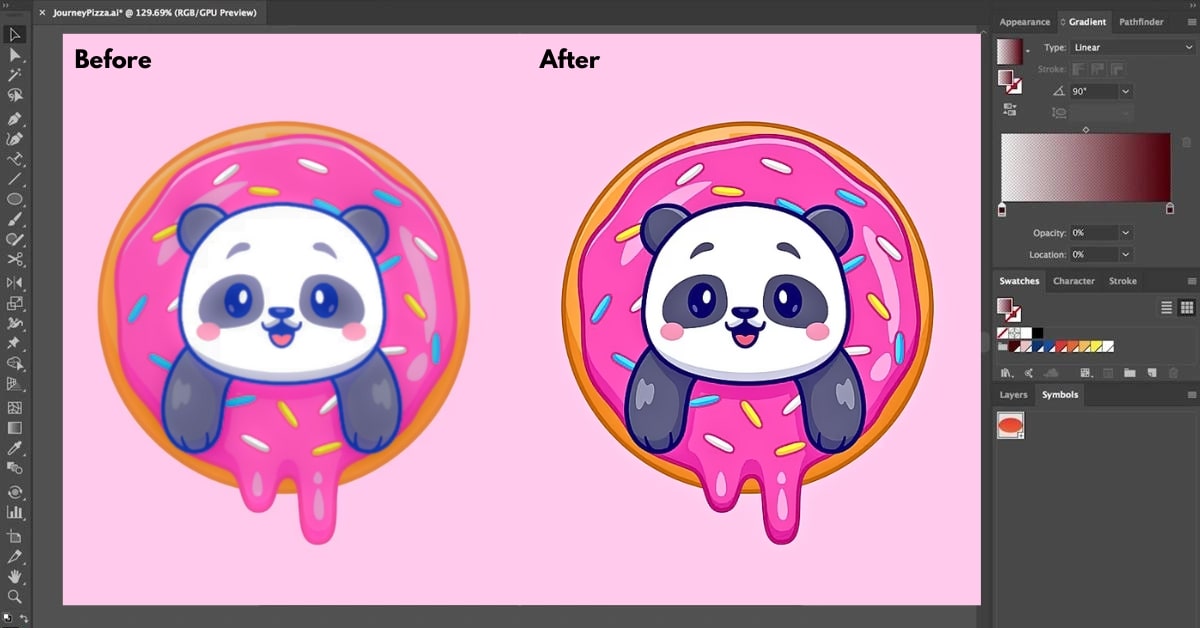Adobe’s suite of creative software, including Illustrator, provides a robust platform for designers seeking to transform raster images into scalable and editable vector graphics. This article explores the methods, techniques, and steps involved in the raster to vector conversion process within Adobe Illustrator, empowering users to seamlessly transition from pixel-based images to the versatility of vectors.
Converting Raster to Vector in Adobe Illustrator
- Open Adobe Illustrator:
- Launch Adobe Illustrator and create a new document or open an existing one where you want to perform the raster to vector conversion.
- Import Raster Image:
- Use the “File” menu to import the raster image you want to convert. Alternatively, you can drag and drop the image directly onto the Illustrator canvas.
- Select Image and Open Image Trace:
- Click on the imported image to select it, then navigate to the “Object” menu and choose “Image Trace” to open the Image Trace panel.
- Choose a Preset or Customize Settings:
- In the Image Trace panel, you can either choose a preset that suits your needs or customize the tracing settings based on the complexity of the image.
- Adjust Advanced Options (if needed):
- Expand the “Advanced” options in the Image Trace panel to fine-tune settings such as paths, corners, noise, or color.
- Preview and Apply Trace:
- Enable the “Preview” option to see how the image will look after tracing. Once satisfied, click the “Trace” button to apply the settings.
- Expand and Edit Vector Paths:
- After tracing, select the image, and click “Expand” to convert the traced image into editable vector paths.
- Utilize Illustrator’s editing tools to refine and customize the vectorized image further.
Advantages of Raster to Vector Conversion in Adobe Illustrator
- Scalability without Quality Loss: Vectorized images can be scaled to any size without losing clarity or detail.
- Precise Editing Control: Vector graphics allow for precise editing of individual elements, colors, and shapes.
- Compatibility and Versatility: Vectorized images are compatible with various design software and platforms, ensuring versatility in different workflows.
- Print and Web Optimization: Vector graphics are ideal for high-quality prints and web graphics, adapting seamlessly to different media.
Conclusion
Converting raster to vector in Adobe Illustrator opens up a world of possibilities for designers, allowing them to transform pixel-based images into scalable and editable vector graphics. By following the outlined steps and leveraging Illustrator’s powerful tools, users can seamlessly integrate vectorized images into their design workflows, ensuring adaptability and precision in various creative projects.
FAQs
Can I convert any raster image to vector in Adobe Illustrator?
While most raster images can be converted, highly detailed or complex images may require additional adjustments for optimal vectorization.
Does the conversion process affect the original quality of the image?
The vectorization process in Adobe Illustrator preserves image quality, allowing for scalable graphics without compromising the original.
Can I edit the vectorized image further after the conversion?
Yes, vectorized images in Adobe Illustrator can be further edited, modified, or customized using the software’s robust set of tools.
Are there limitations to the size or complexity of images suitable for efficient vectorization in Illustrator?
Extremely large or highly complex images might require more processing power and manual adjustments during the vectorization process.
This page was last edited on 27 February 2024, at 11:38 am
